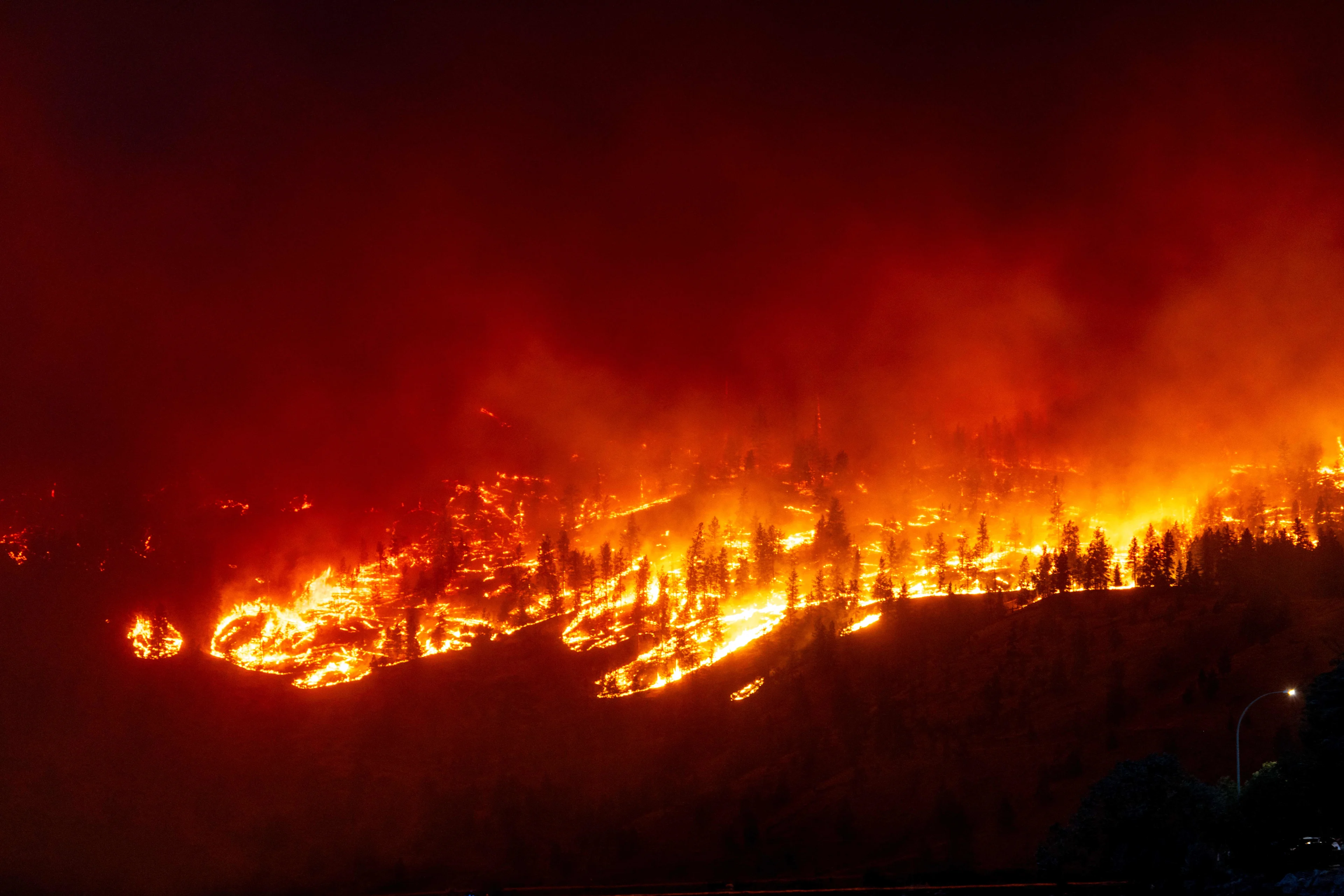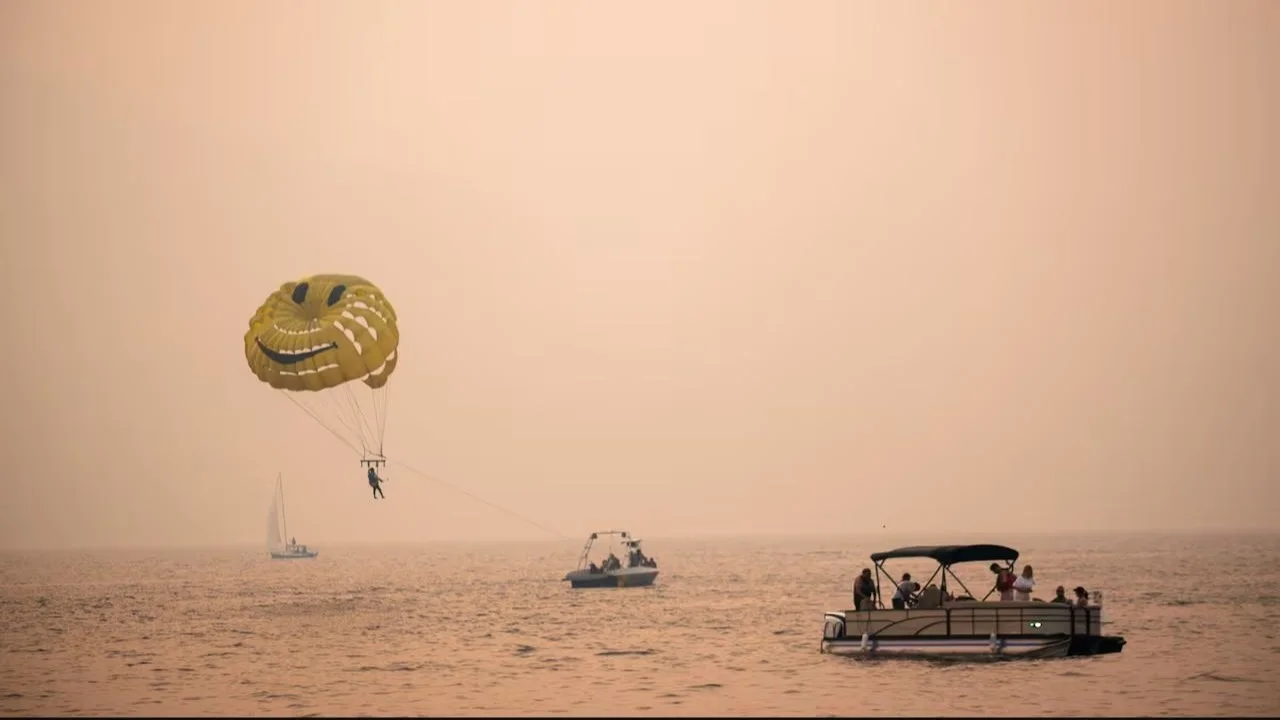
Reasons for wildfires complex but scientists say climate change plays key role
Year after year, B.C. keeps breaking wildfire records.
The four worst seasons on record have all happened since 2017, and the consequences have been crushing — firefighters killed, an entire village virtually destroyed, and oppressive smoke blanketing communities across the continent.
If you follow the chatter online, you might run into a spirited debate about why this is happening.
Is it decades of overzealous fire suppression? Poor forest management? Criminalization of traditional Indigenous burning practices? Systematic destruction of more fire-resistant tree species?
Or is it climate change?
The answer is all of the above, according to wildfire experts.
"It's not one thing that's causing these really bad fire seasons," said Jen Baron, a PhD candidate in the department of forest and conservation sciences at the University of British Columbia.
READ MORE: How much are fossil fuel companies to blame for western wildfires?
"At a broad scale, it's really the interaction between the climate and the fuels that are driving these changes. That also means that there's multiple strategies that we can take to try to address the problem."
But even though all these different elements play a part in our worsening wildfires, climate change has an outsized role, scientists say.
That imbalance is playing out in the boreal forests that have gone up in flames across Canada during this year's disastrous and unprecedented fire season.
"They're traditionally thought of as being more climate-limited systems in the sense that there's always a lot of fuel to burn, but it was very rarely hot and dry enough for it to burn," Baron said.
"The impacts of climate are really felt in the sense that, before, it would have been very rare to have large fire seasons that are as severe as they are today."
Flames, smoke, trees, and water.
Watch below: What role does climate change truly play in wildfires?
On balance, B.C. is seeing increasingly hotter, drier summers and fire seasons that start earlier and last longer than they did a decade ago, according to Mike Flannigan, a professor of wildfire at Thompson Rivers University.
"It's really all about the weather. That's the reason why we've got this incredible fire season," he said.
"Our forest management practices, they've been like this since about the '80s. So why is it we're seeing the bad fire seasons now? It's because the weather has gotten more extreme."
He points to this year's above-average heat, the ongoing drought across the province and increased lightning as major contributors to the fires that have already burned more than 16,000 square kilometres in B.C., with weeks or possibly even months still left to go in the season.
'We can't control the weather'
Flannigan likes to talk about wildfire as a recipe with three necessary ingredients: fuel, ignition and weather.
It's obvious how human-caused climate change feeds into the weather, but he says it also affects the other two ingredients as well.
Extended periods of hot weather without much precipitation causes vegetation to dry out, making it more prone to burst into flames. Instability in the atmosphere also brings more lightning, according to the experts interviewed for this story, and lightning has been responsible for more than 70 per cent of this year's fires in B.C. and the vast majority of area burned.
That leaves B.C. and the rest of the world with limited options for preventing or mitigating wildfires in the here and now.
Specialists who study fire say there are a number of measures B.C. and Canada could take to limit some of the damage caused by wildfires, including more prescribed and cultural burning, drastic changes to the landscape and careful removal of potential fuels like woody debris and dead trees from the forests.
"We can't control the weather," wildland fire ecologist Robert Gray said. "The only thing that we can control is the fuel. And that means that on a large scale — at the scale of the disturbances we're seeing — we have to defuel the landscape."
The Canada-wide undertaking he's advocating for would be massive, Gray acknowledges.
"Upwards of 40 per cent of the landscape needs to look different tomorrow than it does today."

People play on the water in Kelowna City Park in Kelowna, B.C., amid heavy wildfire smoke on Aug. 16, 2023. (Winston Szeto/CBC)
The changes Gray envisions would bring the Canadian landscape closer to what it looked like before colonization and the advent of the logging industry. He describes that as more of a patchwork of different kinds of vegetation, including relatively fire-resistant species like aspen that are currently intentionally eliminated from B.C. forests, rather than huge swaths of highly flammable but commercially valuable conifer trees.
"We really do have a limited window here where we can do things in a big way and it will have a big impact," Gray said.
This would also mean allowing some fires to burn freely, to clear out potential fuels, and learning to tolerate the smoke from more prescribed and cultural burning in the spring and fall.

Amy Cardinal Christianson looks out onto a section of Rocky Mountain House National Historic Site, where she helped co-ordinate a successful planned burn in the summer of 2022. (Kory Siegers/CBC News)
Colonial policies that outlawed traditional burning practices have played a role in the current crisis, according to Amy Cardinal Christianson, an Indigenous fire specialist at Parks Canada.
"Indigenous people weren't burning every inch of the North American continent, what they were doing was conducting specific burns in areas around their communities," she said.
"While they were doing that mostly for cultural reasons like improving berries and making it easier to harvest near their communities and get the resources that they needed, what they were also doing was reducing the amount of fuels around their community in that landscape."
Fire is 'looking for stuff to burn'
As for Flannigan, he agrees there are useful measures that can be taken to reduce fire risks, including at the individual and community level through programs like FireSmart. He said public information campaigns have also caused a steady decline in the number of fires started by human activities over the years.
But climate change is an unavoidable reality.
Flannigan referenced a study from scientists at the University of Victoria and Environment and Climate Change Canada that suggests human-caused climate change increased the area burned in 2017's devastating B.C. fire season by as much as a factor of 11.
A more recent study based on computer modelling of wildfires in California since the 1970s suggests that the warming climate was responsible for a 172-per-cent increase in area burned.
That's because if it's hot, dry and windy enough, almost anything will burn, Flannigan says.
Fort McMurray was surrounded by relatively fire-resistant aspen trees, but they still went up in flames when a catastrophic wildfire swept into the city in 2016. Even wetlands, which normally act as obstacles for spreading fires, are of little help under severe drought conditions.
"Fire is probing, opportunistic — it's looking for stuff to burn," Flannigan said. "When things are extreme, vegetation is fuel. It burns."
This story, written by Bethany Lindsay, was originally published by CBC.
Thumbnail image: The McDougall Creek wildfire burns in the hills West Kelowna, B.C., Canada, on Aug. 17 as seen from Kelowna. Evacuation orders were put in place for areas near Kelowna, as the fire threatened the city of around 150,000. Canada is experiencing a record-setting wildfire season, with official estimates of over 13.7 million hectares already scorched. Four people have died so far. (Darren Hull/AFP via Getty Images)
